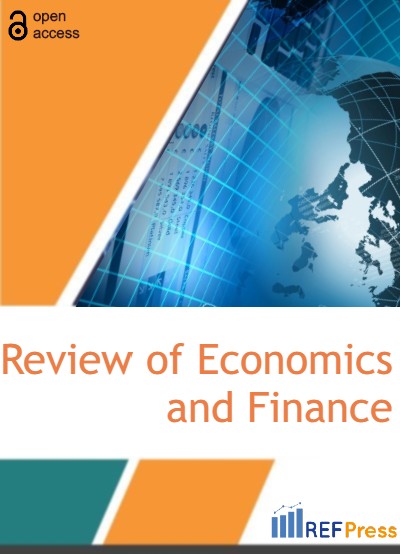
The Role of Digital Technologies in Balancing the Labor Market in the Conditions of the Post-War Recovery of the Ukraine’s Economy
(Pages 1991-2002)Olha Popelo1,*, Iryna Kychko2, Iryna Shaposhnykova3, Kostiantyn Shaposhnykov4, Yuliia Tochylina5 and Vitalii Stoika6
1D.Sc. in Economics, Professor, Department of Management and Administration, Chernihiv Polytechnic National University, 95 Shevchenko Str., Chernihiv, 14035, Ukraine.
2D.Sc. in Economics, Professor, Department of Personnel Management and Labor Economics, Chernihiv Polytechnic National University, 95 Shevchenko Str., Chernihiv, 14035, Ukraine.
3D.Sc. in Economics, Professor, Dean of the Faculty of Psychology, History and Sociology, Kherson State University, 14 Shevchenka Str., Ivano-Frankivsk, 76018, Ukraine.
4D.Sc. in Economics, Professor, Research and Certification of Scientific Personnel Department, State Scientific Institution “Institute of Education Content Modernization”, 36 Metropolitan Vasil Lypkivsky Str.,03035, Kyiv, Ukraine.
5PhD in Economics, Associate Professor, Department of Economics and Entrepreneurship, Odessa State Academy of Civil Engineering and Architecture, 4 Didrihsona Str., Odesa, 65125, Ukraine.
6PhD in Economics, Associate Professor, Department of Economy and Socio-Behavioral Sciences, Pavlo Tychyna Uman State Pedagogical University, 2 Sadova Str., Uman, 20300, Ukraine.
DOI: https://doi.org/10.55365/1923.x2023.21.214
Abstract:
The article examines the conditions that shape the demand and supply of labor, namely: digitalization of all spheres of life, functioning of the real sector of the economy, natural growth (reduction) of the population; dynamics of migration processes in the country. The destruction of numerous industrial enterprises as a result of military actions on the territory of Ukraine caused a decrease in the overall level of employment and an increase in unemployment. It is argued that the post-war recovery of Ukraine's economy may face labor shortages and economic stagnation. The article emphasizes that the population engaged in economic activity on the territory of Ukraine forms aggregate demand, increasing revenues to the budget, making it possible to implement and raise social standards. External population migration, on the contrary, increases the aggregate demand of other countries. It is noted that the probability of an imbalance in the labor market during the post-war reconstruction of Ukraine can be caused by: the dismissal of certain categories of workers as a result of automation and digitalization; raw material orientation of economic activity; insufficient number of enterprises for processing own grown and mined raw materials; the lack of methodological tools’ development for improving investment attractiveness as a prerequisite for increasing the level of employment and reducing external migration; a weak level of information support for the importance of forming aggregate demand for consumer goods of own production, etc. Ways to balance the labor market in the period of post-war economic recovery of Ukraine, measures to reduce external migration and population depopulation are proposed.
Keywords:
digital technologies, external migration, labor market, industrial enterprises, labor potential, natural population growth (decrease), investment attractiveness, population savings, managerial competences, post-war economic recovery, national economy.
How to Cite:
Olha Popelo, Iryna Kychko, Iryna Shaposhnykova, Kostiantyn Shaposhnykov, Yuliia Tochylina and Vitalii Stoika. The Role of Digital Technologies in Balancing the Labor Market in the Conditions of the Post-War Recovery of the Ukraine’s Economy. [ref]: vol.21.2023. available at: https://refpress.org/ref-vol21-a214/
Licensee REF Press This is an open access article licensed under the terms of the Creative Commons Attribution Non-Commercial License (http://creativecommons.org/licenses/by-nc/3.0/) which permits unrestricted, non-commercial use, distribution and reproduction in any medium, provided the work is properly cited.
